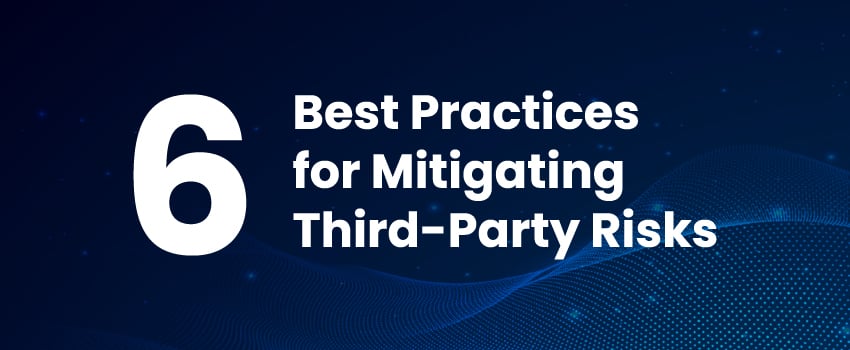In today's digital age, businesses frequently grant third-party vendors and contractors access to network resources. While this is necessary to enable outsourced parties to complete certain tasks, security teams often know little to nothing about these individuals or how they handle data. In fact, 54% of businesses lack a comprehensive inventory of third-party access to their network.1
So it’s likely no surprise that 50% of organizations reported a third-party data breach in 2022.2 And as more than 70% of these breaches occur due to providing too much privileged access, managing third-party access is a vital step in securing your network against threats.
Third-party users can also introduce malware into a business network. As an example, Click Studios’ business password manager, Passwordstate, was breached in April of 2022 when hackers spread malware to its users through the application’s update mechanism. The 370,000 security and IT professionals at 29,000 organizations3 worldwide that could have been impacted by the incident needed to change every password they used in the Passwordstate database to ensure they weren’t affected.
In this blog, we’ll discuss the importance of managing third-party access and share best practices to help you prevent third-party risks from impacting your business.

How Do Businesses Manage Third-Party Access?
As scary as third-party risks are, they can often be mitigated by following these six best practices:
1. Conduct a Risk Assessment
A risk assessment involves examining the potential vulnerabilities associated with privileged access. This assessment should include an evaluation of the third-party user’s security controls, compliance with applicable laws and regulations, and track record with previous clients.
2. Set and Enforce Clear Policies for Enabling Access
Do this as a part of third-party contract negotiations and vendor onboarding. Start by identifying the resources third-party users have access to, along with the level of privileges needed to perform their duties successfully. Then enforce these policies with background checks, training, and penalties for failing to comply.
3. Improve Third-Party Authentication Procedures
Make it difficult to compromise privileged credentials. Do this by implementing measures such as multi-factor authentication (MFA), eliminating shared accounts, and deleting credentials during offboarding.
4. Separate Authentication and Access Control
Use physical or logical network segmentation to limit the scope of network resources available. This makes it more difficult to exploit additional vulnerabilities if an attacker gains access through privileged credentials.
5. Monitor Suspicious Activity
Keep a log of user activities, including when and what systems are accessed. You can use this information to address unauthorized activity, determine intent, and identify which third-party users need additional training.
6. Conduct Regular Audits
It’s critical to ensure the level of access provided is still necessary, appropriate, and secure. Audit your third-party users regularly, and have a plan for quickly revoking third-party access in case of a security incident or contract termination.
Minimize Third-Party Risks With Safous
Whether malicious or accidental, third-party threats can cause significant damage to your business. Luckily, you can minimize risks and safeguard your network by taking a proactive approach to third-party access management.
Safous helps organizations secure their networks and deliver fast, reliable access to company resources with our advanced zero trust access (ZTA) solution.
Safous ZTA helps businesses manage third-party risks by implementing role-based access control, applying policy-based privileges, and providing complete visibility across the network. Additionally, Safous ZTA is easy to install and offers a high level of control – all while allowing your internal staff to safely connect to the applications and data they need to work from anywhere.
If you’re ready to learn more about protecting your business with effective third-party access management, contact Safous today.
Sources:
- https://www.forbes.com/sites/forbestechcouncil/2021/11/03/why-managing-third-party-access-requires-a-better-approach
- https://edtechmagazine.com/k12/article/2022/09/report-finds-link-between-third-party-access-and-cyberattacks-2022
- https://reciprocity.com/blog/how-to-prevent-third-party-vendor-data-breaches/#:~:text=Any%20vendor%20in%20your%20business,a%20third%2Dparty%20data%20breach.
Receive the latest news, events, webcasts and special offers!
Share this
You May Also Like
These Related Stories

What Businesses Can Learn From 2022’s Biggest Third-Party Data Breaches

RPAM for Third-Party Vendor Access Management: Supply Chain Security





